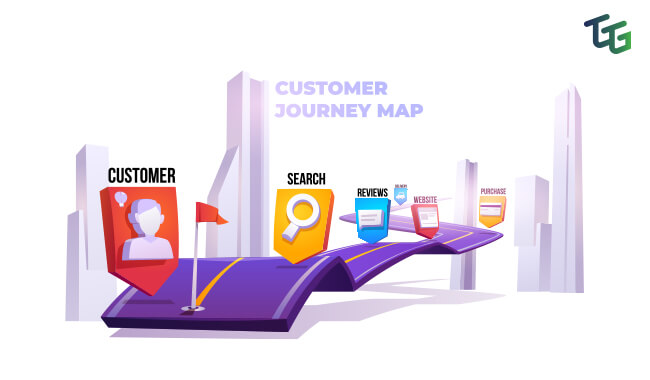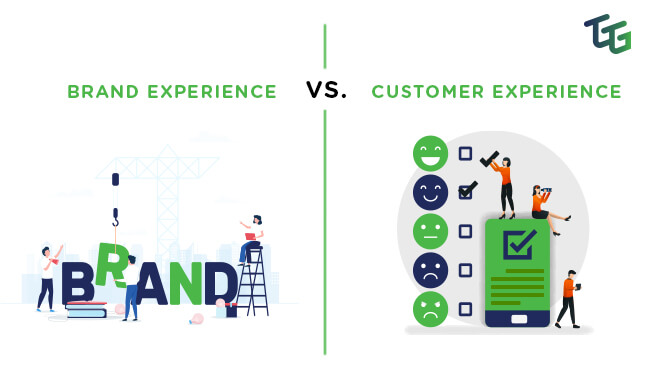It has often been claimed that there is no real difference between a Brand Experience and a Customer Experience.
The basis of this school of thought seems to be that, if the Brand Experience does not help the customer get the experience they want, the whole thing is for nought. While we agree that a Brand Experience should be designed with the customer in mind, we however do not buy into the logic that the two are the same.
Let us understand Brand Experience first.
Brand Experience is the holistic perception that the world at large, whether they are your customers or not, has about your company and its product/s.
We can, as an example, take a look at Google.
When we come across an application, software, or product that bears the Google name or logo, we immediately expect a certain standard, level of innovation, and user experience from it. We may not even have used the app/software/product in question yet, but we will have a positive opinion on it. That, right there, is the Brand Experience of Google.
In this age of technological advancements, it might be the easiest to create your Brand Experience digitally, but that is not where it should end. A successful Brand Experience maps both online and offline interactions with the target clientele, considers your brand’s positioning against your competitors, and most importantly, focuses on the big picture or overall impact that you want your brand to have on the world.
A successful Brand Experience does not culminate when the sale is concluded, either. It starts with the creation of awareness in and acquisition of the customer but stays with the customer at every step thereafter – it encompasses the purchase experience to the product/service usage/support experience to ensure loyalty/advocacy for the brand in the customer.

It is clear from the above that Customer Experience is intricately linked to Brand Experience.
Going back to our Google example, when we use any of the Google apps/software/products/services, each of these apps/software/products/services gives us a unique customer experience. For example, let us say you are using both Gmail and GPay. You are very satisfied with Gmail, but not that satisfied with GPay. Clearly, then, your Customer Experience has been different for the two products, and yet your overall perception of the Google brand might not have been affected.
What, then, is the difference between a Brand Experience and a Customer Experience?
Broadly and simply put, the Brand Experience is the umbrella, and Customer Experience is sheltering underneath it. Customer Experience is only a part of an amazing Brand Experience.
The 5 key differences between Brand Experience and Customer Experience are as below:
| A Brand Experience | A Customer Experience |
|---|---|
| • is holistic, tells your brand story. | • is more product/service specific. |
| • draws new customers in. | • creates repeat customers. |
| • is dependent on Marketing & Sales teams. | • is dependent on the Customer Service team. |
| • is a long-term strategy, takes time to build. | • is immediate, based on product/service use. |
| • makes promises. | • keeps those promises. |
Synergies between the Brand Experience and the Customer Experience are important.
When a prospective customer is contemplating making a purchase from your brand, they will take into account every relevant interaction, information and message that they have had with/from your brand. It is therefore only with a great Brand Experience that you can convert a prospective customer into an actual customer.
Then, it is up to your product/service to deliver a great Customer Experience that lives up perfectly to the expectations created by the great Brand Experience.
Just as a great Brand Experience will lose its purpose if not followed up by an equally great Customer Experience, a superb Customer Experience will likely not even come to fruition without a great Brand Experience to rely on.
This is where, most often, organisations forget to synergise. A marketing strategy that does not focus on parity of both is bound to result in missed revenues.
So how do you align and synergize your Brand and Customer Experiences?
It is all about consistency. Your Brand Experience should give your potential customer a clear and concise understanding of what your brand stands for – your brand story, personality, and the emotional resonance that it has with the recipient.
Once that kinship is kindled, the Customer Experience should be designed to take that overall feeling of familiarity and convert it into something that the customer actually needs or wants.
Simply put, if your Brand Experience promises a great product or service, but the actual product or service does not match the expectations, the Customer Experience you are providing is not perfectly aligned with the Brand Experience. And a mismatch between the Customer Experience and the Brand Experience can be disastrous for your brand.
Commitment to delivering your brand through Customer Experience is important because the actual experiences and perceptions that your customers will have of your brand will eventually shape the Brand Experience.
So, when you are designing your Brand Experience and Customer Experience, ask yourself:
- Is your brand delivering on the promise it is making to customers via the Brand Experience?
- Would the customers themselves describe the Customer Experience to be perfectly in line with the Brand Experience?
- Does this description fit your brand identity?
- Are both the Brand Experience and the Customer Experience consistent with each other, and are the values duly reflected in the behaviours of your staff and management?
If you need help in streamlining the answers to any of these questions and strengthening your Customer and Brand Experiences, we at The Go-To Guy! shall be happy to help you design experiences for your customers that are foolproof and will ensure that your business stays in business for eternity.

